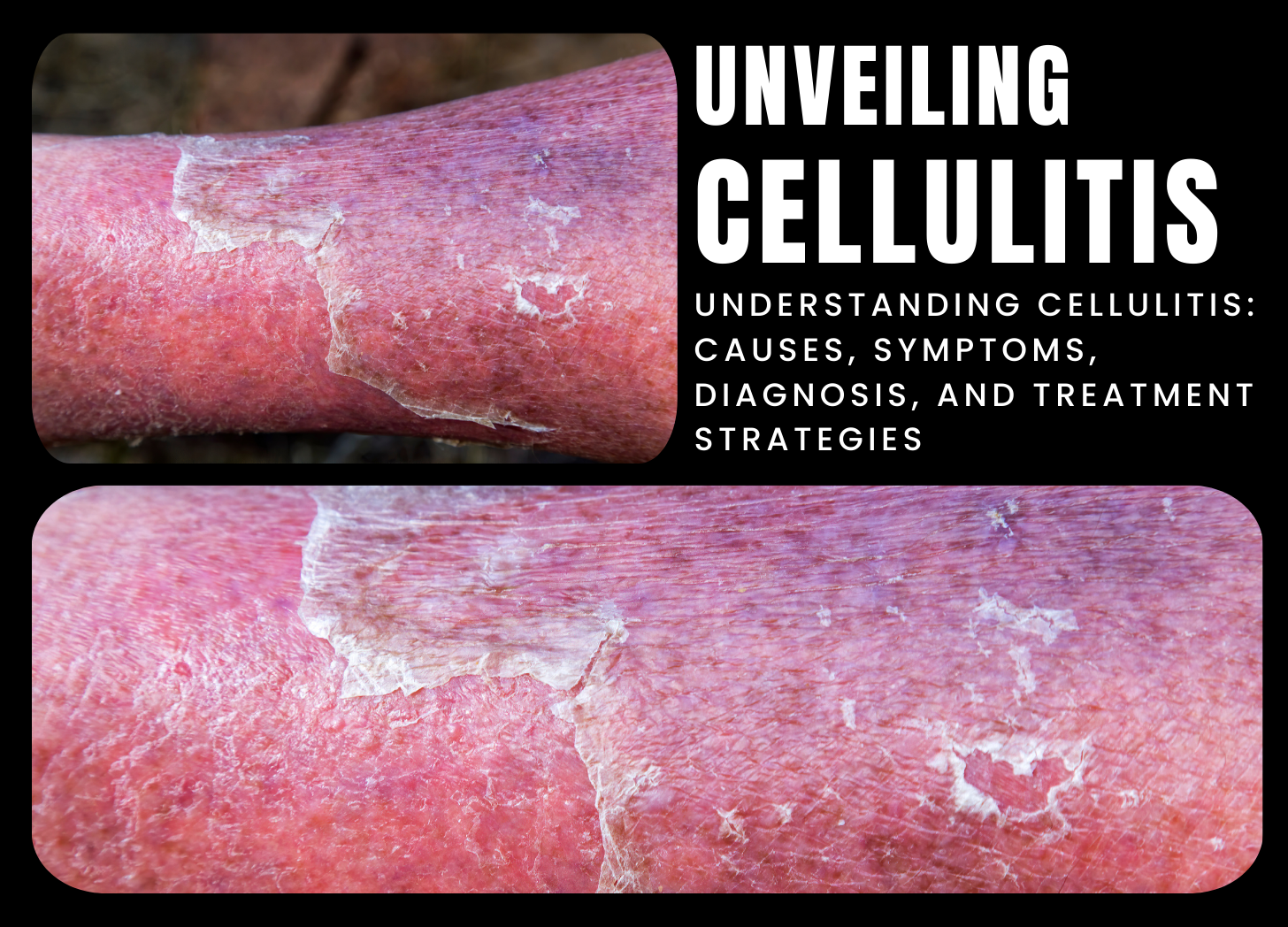Contact Us
Contact Us

Cellulitis is a frequent bacterial skin illness that targets the skin’s deeper layers and subcutaneous tissue. It usually happens when germs, most commonly Staphylococcus aureus or Streptococcus pyogenes, invade the skin by a cut, wound, insect bite, or other hole in the skin barrier. Cellulitis can occur anywhere on the body, although it is most frequent in the lower legs, arms, and face. While cellulitis is typically not serious and may be quickly treated with antibiotics, it can cause consequences if left untreated or if the infection spreads to deeper tissues or the circulation.
Cellulitis is caused mostly by bacterial infection, most usually by Staphylococcus aureus or Streptococcus pyogenes, both of which can be found on the skin or in the environment. Cuts, scrapes, burns, surgical wounds, and insect bites can all allow germs to penetrate the skin. Individuals with damaged immune systems, chronic medical problems (such as diabetes or peripheral vascular disease), or lymphedema (limb swelling caused by poor lymphatic drainage) are more likely to develop cellulitis.
Common cellulitis symptoms include redness, warmth, swelling, and tenderness in the affected area of the skin, as well as pain or discomfort, fever, chills, exhaustion, or swollen lymph nodes. Cellulitis symptoms can deteriorate quickly, and severe instances may lead to necrotizing fasciitis (a rare but serious infection that affects deeper layers of tissue) or sepsis (a potentially fatal illness marked by systemic inflammation and organ malfunction).
Cellulitis is normally diagnosed through clinical evaluation, which includes a comprehensive medical history and a physical examination of the afflicted skin area. In rare circumstances, laboratory tests such as blood cultures or wound cultures may be used to determine the culprit bacteria and guide antibiotic therapy. Imaging procedures, such as ultrasound or magnetic resonance imaging (MRI), may be conducted to determine the severity of the infection or rule out alternative possibilities.
To treat cellulitis, oral or intravenous antibiotics are used to target the underlying bacterial infection and reduce inflammation. The antibiotic used is determined by the severity of the infection, the bacteria suspected of causing it, and any underlying medical conditions or allergies. In addition to medicines, supportive measures such as elevating the affected leg, rest, and pain treatment may be prescribed to reduce symptoms and improve healing.
To summarize, cellulitis is a bacterial skin illness that affects the deeper layers of the skin and subcutaneous tissue, usually caused by Staphylococcus aureus or Streptococcus pyogenes. Early diagnosis, antibiotic therapy, and good wound care are critical for controlling cellulitis and avoiding complications. Individuals can lower their chance of having cellulitis by practicing excellent hygiene, guarding their skin from harm, and seeking medical assistance for cuts or wounds that appear to be infected.
References:
1.Mayo Clinic. (2022). Cellulitis. Retrieved from https://www.mayoclinic.org/diseases-conditions/cellulitis/symptoms-causes/syc-20370762
2.American Academy of Dermatology Association. (2022). Cellulitis. Retrieved from https://www.aad.org/public/diseases/a-z/cellulitis
Post a Comment